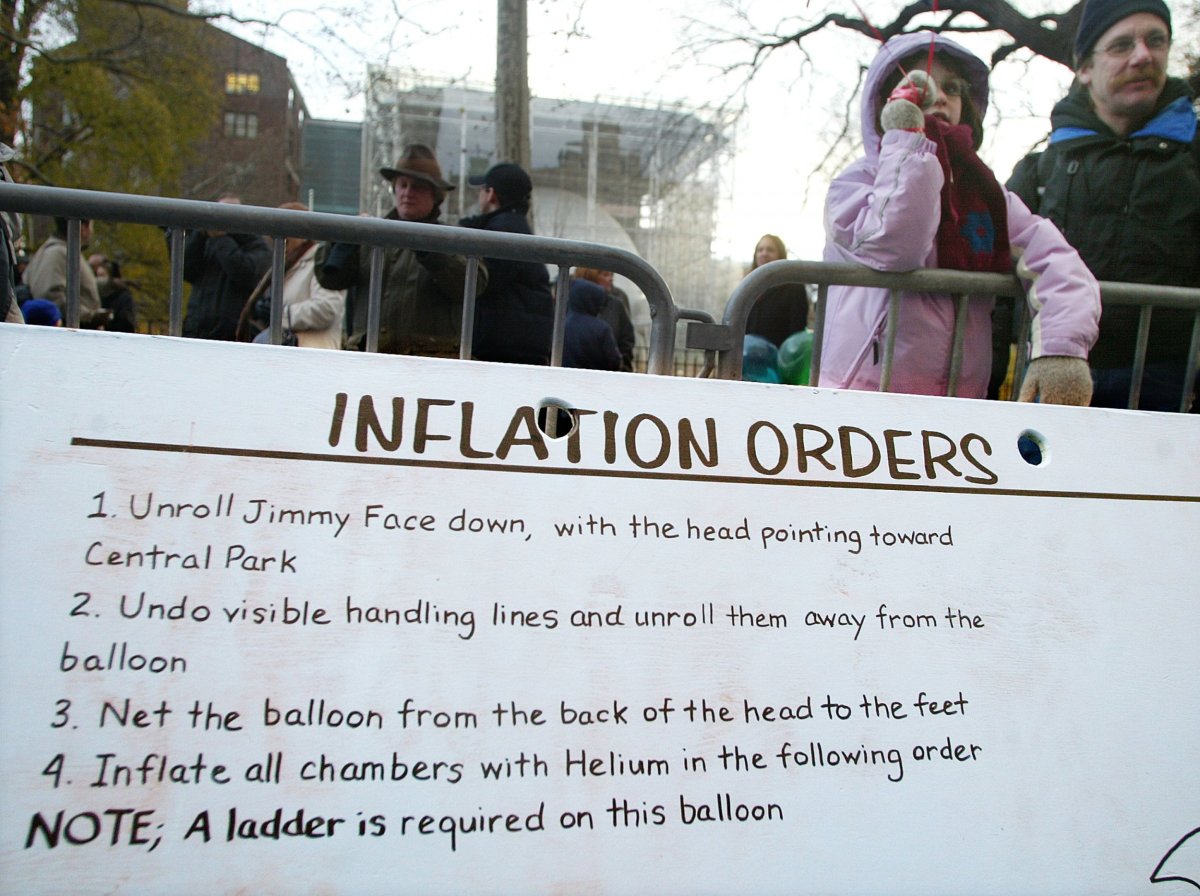
Before Snoopy and his new friends can strut the streets of New York City and a Santa Claus actor can distribute carbon-rich coal (and, more optimistically, presents), the Macy's Thanksgiving Day Parade will require vast quantities of another element: helium.
Last year, the event used a total of 300,000 cubic feet of helium (despite a shortage of the element). One cubic foot of the gas at sea level can lift about 0.064 pounds of weight. Just one of the giant, building-sized balloons can weigh about 400 pounds and hold 12,000 cubic feet of helium. Each balloon is made up of different compartments, since the overall outer shape can be full of nooks and crannies that are otherwise difficult to pressurize properly to achieve the perfect plumpness that balloon pilots seek.
During the parade, each balloon is handled by about 90 people and roped to a car to keep it under control. But there's still meteorology to consider: New York City won't let the balloons fly if wind speeds are above 23 miles per hour sustained or 34 miles per hour gusts.
The balloon shells are made of fabric coated with polyurethane, a type of plastic that takes color well and is flexible, making it perfect for the balloons. The combination of plastic and fabric helps the balloons endure whatever conditions they may encounter during their trip. It's an innovation from the original parade figures, which were made of rubber. That old recipe also meant that during World War II, balloons were melted down to contribute to the war effort, which wouldn't work today.

The balloons were initially inflated during an event held yesterday, then their helium levels are topped off in the morning, before the parade sets off. But they are never filled all the way, because as the day warms, it heats the gas, causing it to expand. Balloon pilots also harness this physics to make sure the balloons look their best before important photo opportunities: They move the balloon to the sunny side of the street to plump up a bit.
In fact, warm air in general is a good technique for inflating balloons, although it's not effective in a situation like the parade with balloons sitting out in the open for hours beforehand. Hydrogen can also be used to inflate balloons—but unlike helium, it can explode when it encounters oxygen in the air. So if you watch the parade this morning, take a moment to give thanks for helium and all the other science that keeps the balloons aloft.
Uncommon Knowledge
Newsweek is committed to challenging conventional wisdom and finding connections in the search for common ground.
Newsweek is committed to challenging conventional wisdom and finding connections in the search for common ground.
About the writer
Meghan Bartels is a science journalist based in New York City who covers the science happening on the surface of ... Read more
To read how Newsweek uses AI as a newsroom tool, Click here.








